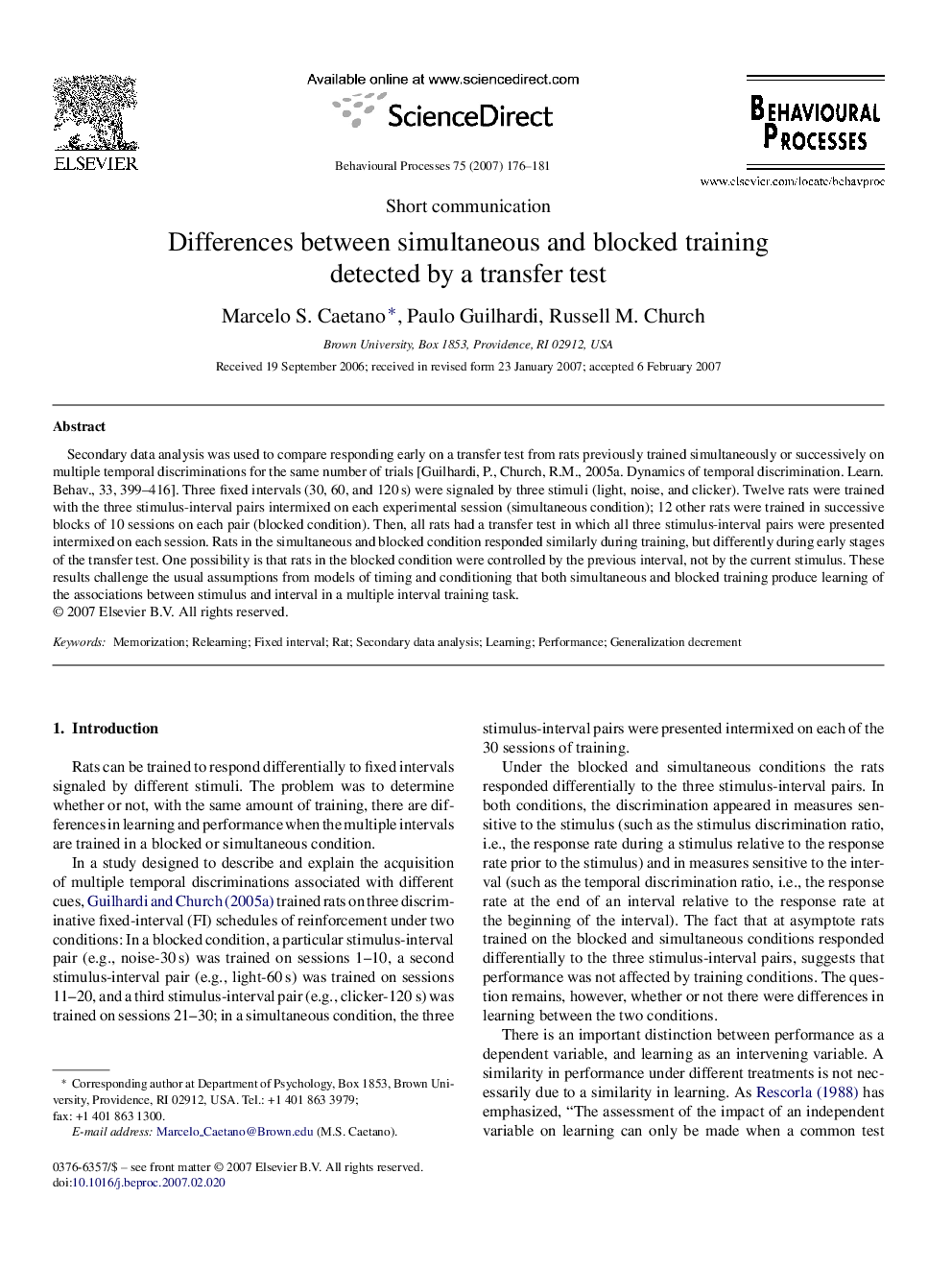| Article ID | Journal | Published Year | Pages | File Type |
|---|---|---|---|---|
| 2428021 | Behavioural Processes | 2007 | 6 Pages |
Abstract
Secondary data analysis was used to compare responding early on a transfer test from rats previously trained simultaneously or successively on multiple temporal discriminations for the same number of trials [Guilhardi, P., Church, R.M., 2005a. Dynamics of temporal discrimination. Learn. Behav., 33, 399-416]. Three fixed intervals (30, 60, and 120Â s) were signaled by three stimuli (light, noise, and clicker). Twelve rats were trained with the three stimulus-interval pairs intermixed on each experimental session (simultaneous condition); 12 other rats were trained in successive blocks of 10 sessions on each pair (blocked condition). Then, all rats had a transfer test in which all three stimulus-interval pairs were presented intermixed on each session. Rats in the simultaneous and blocked condition responded similarly during training, but differently during early stages of the transfer test. One possibility is that rats in the blocked condition were controlled by the previous interval, not by the current stimulus. These results challenge the usual assumptions from models of timing and conditioning that both simultaneous and blocked training produce learning of the associations between stimulus and interval in a multiple interval training task.
Keywords
Related Topics
Life Sciences
Agricultural and Biological Sciences
Animal Science and Zoology
Authors
Marcelo S. Caetano, Paulo Guilhardi, Russell M. Church,
